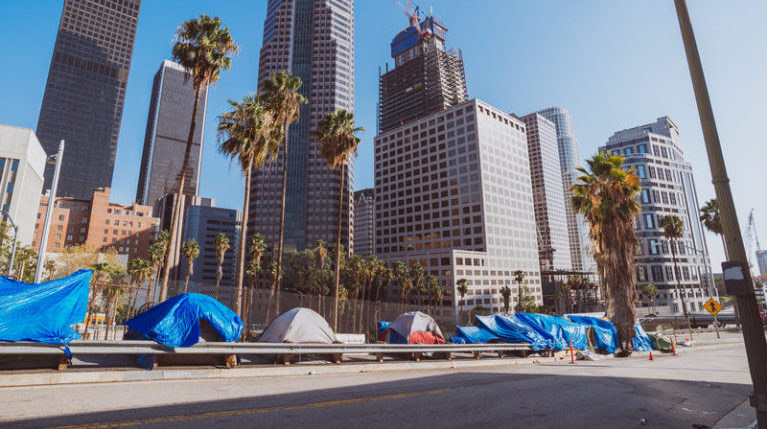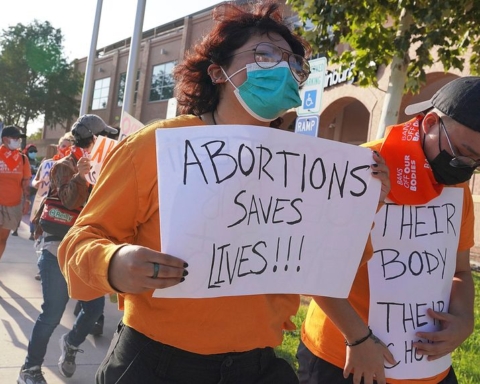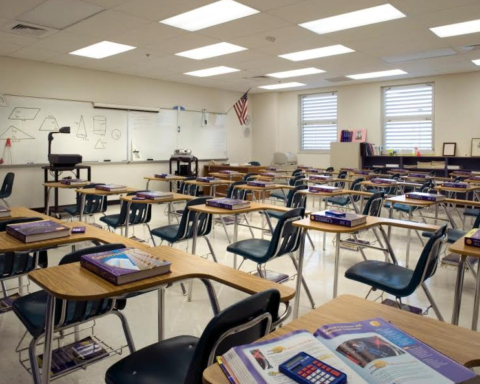Due to decades of misguided and faulty policies, homelessness is a serious problem. Over half a million people go homeless on a single night in the United States. Approximately 65 percent are found in homeless shelters, and the other 35 percent—just under 200,000—are found unsheltered on our streets (in places not intended for human habitation, such as sidewalks, parks, cars, or abandoned buildings).
Homelessness almost always involves people facing desperate situations and extreme hardship. They must make choices among very limited options, often in the context of extreme duress, substance abuse disorders, untreated mental illness, or unintended consequences from well-intentioned policies.
Improved policies that address the underlying causes of the problem and more effectively serve some of the most vulnerable members of society are needed.
This report (i) describes how homelessness varies across States and communities in the United States; (ii) analyzes the major factors that drive this variation; (iii) discusses the shortcomings of previous Federal policies to reduce homeless populations; and (iv) describes how the Trump Administration is improving Federal efforts to reduce homelessness.
We first document how homelessness varies across the United States. Homelessness is concentrated in major cities on the West Coast and the Northeast. Almost half (47 percent) of all unsheltered homeless people are found in the State of California, about four times as high as California’s share of the overall U.S. population. Rates of sheltered homelessness are highest in Boston, New York City, and Washington, D.C., with New York City alone containing over one- fifth of all sheltered homeless people in the United States.
In the context of a simple supply and demand framework, we analyze the major causes of this variation in homelessness across communities: (i) the higher price of housing resulting from overregulation of housing markets; (ii) the conditions for sleeping on the street (outside of shelter or housing); (iii) the supply of homeless shelters; and (iv) the characteristics of individuals in a community that make homelessness more likely.
Some statistics say, the first cause we consider is the overregulation of housing markets, which raises homelessness by increasing the price of a home. Using external estimates of the effect of regulation on home prices and of home prices on homelessness, we simulate the impact of deregulation on homeless populations in individual metropolitan areas. We estimate that if the 11 metropolitan areas with significantly supply-constrained housing markets were deregulated, overall homelessness in the United States would fall by 13 percent.
So The Question I Ask You Is When Will There Be A Change?
Causes
Causes of homelessness in the United States include lack of affordable housing, divorce, lawful eviction, negative cash flow, post traumatic stress disorder, foreclosure, fire, natural disasters (hurricane, earthquake, or flood), mental illness, physical disability, having no family or supportive relatives, substance.
Solutions
The solutions are highlighted below.
* Housing. …
* Integrate Health Care. …
* Build Career Pathways. …
* Foster Education Connections. …
* Strengthen Crisis Response Systems. …
* Reduce Criminal Justice Involvement. …
* Build Partnerships. …
* Prevent Homelessness
Effects
Homeless children have higher rates of ear infections, stomach problems and asthma than other children their age. They are also more likely to be depressed, anxious, or withdrawn, and have more difficulty in school than their peers. Homeless adults are also at greater risk for serious health conditions.
Is This America?
Written by lala
Instagram official_lala_baby_






